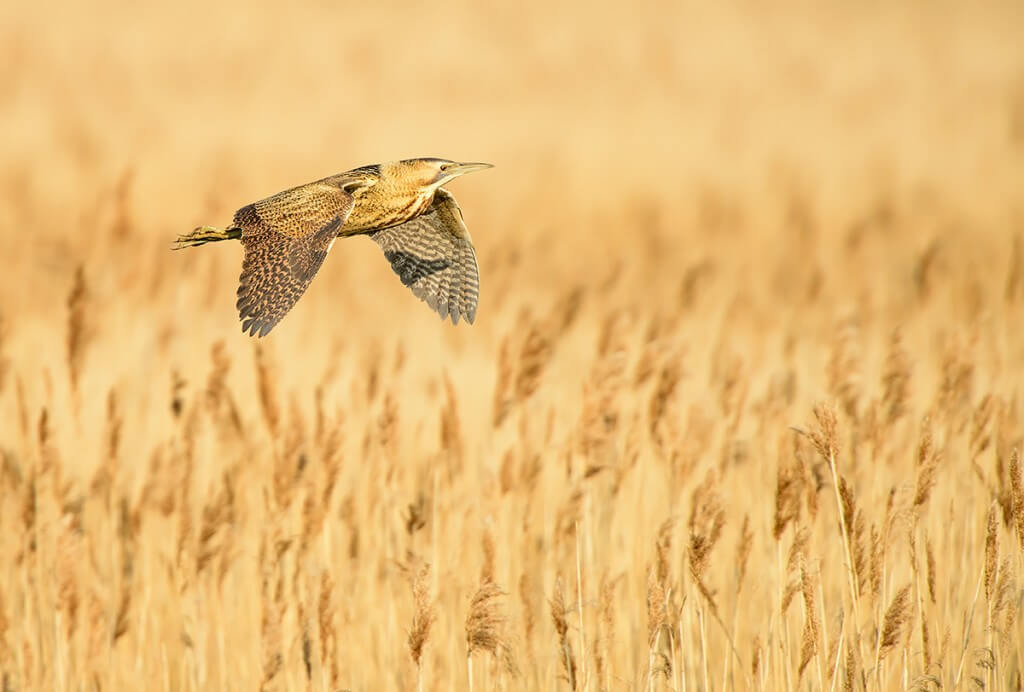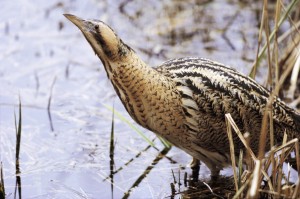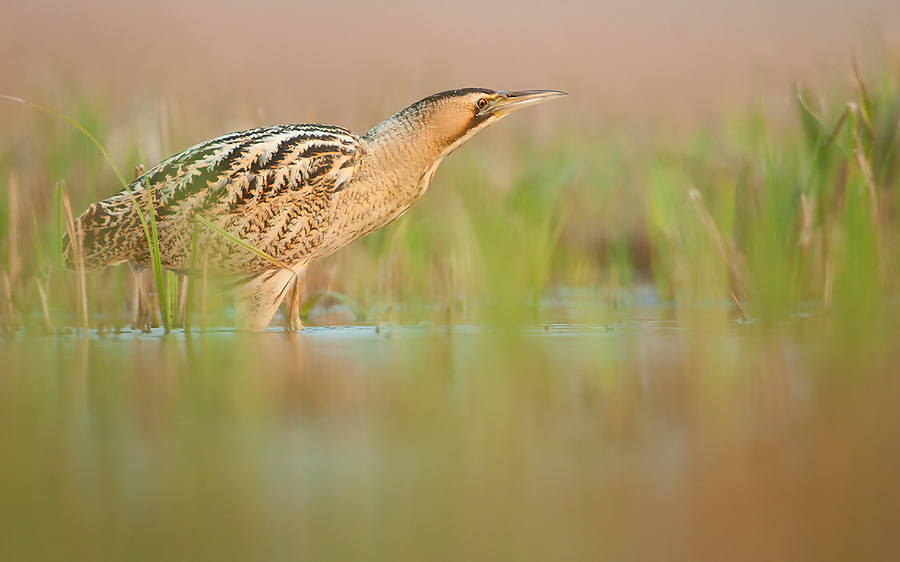
There are more Bitterns breeding in the UK than at any time in living memory.
In fact, there are about 13 times as many bitterns now as there were in 1997, as there are over 140 booming males compared with 11 then. That’s one hell of a recovery – in fact, one heaven of a recovery.
This revival was secured through:
-

Ham wall RSPB reserve on the Somerset Levels. Photo: David Wootton good science – somewhere I still have an image of Ken Smith and Glen Tyler radio-tracking bitterns. By the way, how would you catch a Bittern?
- brave management of sites – sending the bulldozers and diggers into reedbeds takes a bit of nerve, I can tell you
- a clear land acquisition policy – the RSPB bought land, inland, to create wetlands that could hold Bitterns as it was clear that existing sites were under-performing and were at risk from sea level rise
- brave funding – the RSPB committed a lot of money to saving the Bittern
- good partners – working with the Wildlife Trusts and National Trust in particular
- leadership – there is no doubt that the RSPB led this recovery intellectually and practically.
This spectacular recovery of a bird almost down to single figures looks a lot easier when looking back, than it did when looking forward. There aren’t many organisations who have achieved such an increase in such a declining species in the UK – which ones can you think of?

We never thought, we really didn’t, that Somerset would by now be the Bittern capital of the UK with 45 booming Bitterns on the Somerset Levels. There were none there when I used to visit as a boy. In those times, East Anglia was ‘the’ place for Bitterns with Minsmere, the Broads and the north Norfolk coast being the places to go (there were Bitterns in the northwest of England too – but they seemed a very long way away!).
Some of this recovery has been fuelled by EU money – the Bittern was an EU priority species and the sites on which Bitterns live tend to be EU-designated sites for their general (not just Bittern) wildlife value. EU funding has helped Bitterns and other UK wildlife, EU designations have protected UK Bittern sites and a host of sites important for other wildlife.
Martin Harper said: “Thanks to protection under European laws and key partners working together, bittern numbers have been gradually climbing since 2000. Bitterns needed conservation on a country-wide, landscape scale and without the support of the EU’s Birds Directive, which protects all European wild birds and the habitats of listed species like the bittern, this would not have been possible. The bittern success story should give hope that it is possible to recover threatened species and that it makes sense to protect the laws that protect nature.”
RSPB scientist, Simon Wotton said: “I’ve been working with bitterns for 10 years and it is wonderful to see how they have responded to the habitats we have restored for them. They’re amazing birds to watch so it is incredibly rewarding to see their numbers growing.”
Environment Secretary Elizabeth Truss said: “The bittern’s distinctive ‘booming’ call is just one way in which it is a truly special bird, and I’m delighted that future generations will have the chance to hear it. This success is down to the hard work of the conservation organisations, landowners and Government agencies who worked together to improve and create new reedbeds for Bitterns to breed in. This shows it is possible to reverse even serious declines in threatened species.”
Simon Clarke, Somerset National Nature Reserves Manager at Natural England said: ‘The Avalon Marshes in Somerset, including Natural England’s Shapwick Heath National Nature Reserve, now supports a thriving population with around 45 booming male bitterns and at least 20 recorded nests, whereas only seven years ago there were none. This impressive network of reedbeds and marshes has also supported breeding little bitterns and great white egrets in recent years, showing just what can be achieved through large scale habitat restoration in a short space of time.”

[registration_form]
Yes a great result by those concerned.We never thought we would go to Somerset Levels expecting to see Bitterns,Marsh Harriers and Great White Egrets.
Well done RSPB and of course the other wildlife organisations in that area who have also played a important part also local birders who have at times played a part by protecting nests in some instances.
Really bad that in some cases 24 hour protection required and in some cases nests have to be kept secret.
Good story of farmer,hooray there are plenty of good ones.
kye and Frisa @skyeandfrisa
#Mull farmer reportd inj barnowl. For his trouble he got talon in thumb & behind nail. Ouch! Owl enroute 2 SPCA,who are absolutely brilliant.
We went down to the Somerset Levels in the spring of 2013. What a fabulous place, it must be one of the best reserves in the UK. We heard 4 bitterns booming and the place was alive with all the summer visitors coming in. Not to mention the breeding great white egrets or the never to be seen little bittern. Well done to all the conservation organisations involved.
I feel totally blessed to live on the edge of the Somerset Levels. In spring/summer the reserves are alive with booming bitterns, hawking hobbies and tuneful Cettis.
Whilst just yesterday we were watching thousands of starlings swarming over our heads whilst, in the background, a marsh harrier quartered the reedbed. All to the soundtrack of the water rail’s squeal.
Pete – sounds just wonderful! Having grown up in Bristol I know the Levels quite well, and maybe because of that history, I find them one of my favourite places.
That’s the first time I’ve heard Cetti’s warblers described as tuneful! Wonderful to have them established in this country, though.
The bittern is a wonderful success story. Jolly confusing though because I’m sure I’ve read that the RSPB is only concerned with birds of prey (when it’s not plotting a left wing revolution, of course). Just goes to show you can’t believe everything you read in the papers 🙂